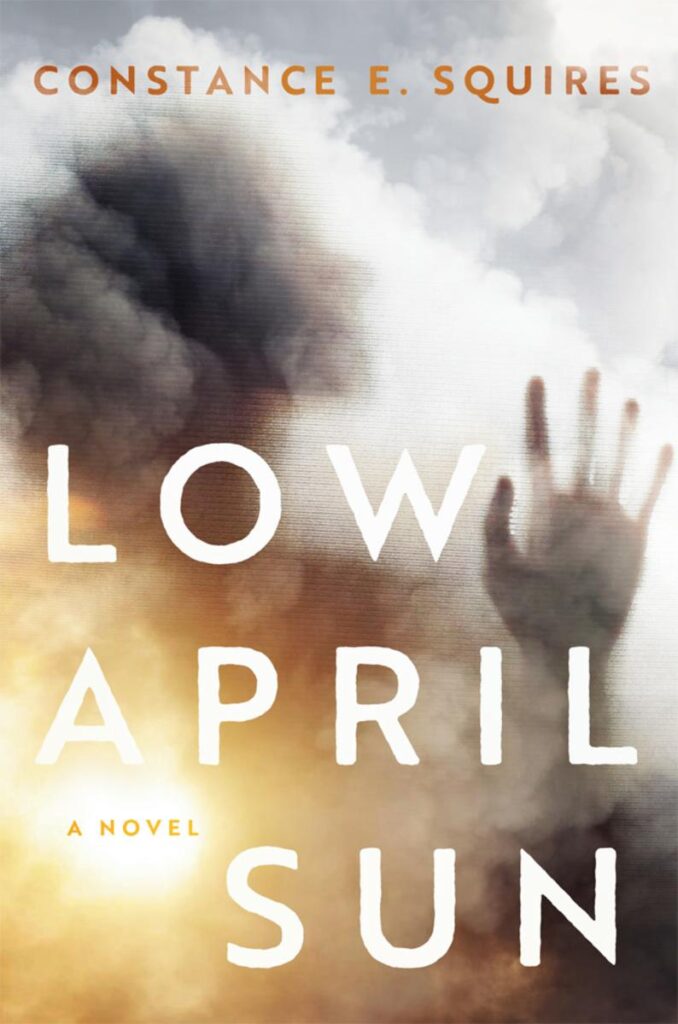Oline Cogdill recently sent a review of Low April Sun by Constance E. Squires. Cogdill’s review appeared in the South Florida Sun Sentinel, and she allows us to reprint it here. Although Low April Sun is a special order through the Webstore, https://bit.ly/424UX6H, it’s the first novel about the Oklahoma City bombing, so it may be of interest.
Book review: ‘Low April Sun’ offers poignant look at aftermath of Oklahoma City bombing
In her novel’s acknowledgments, author Constance E. Squires said she lived in Oklahoma City when the bombing happened and had long wanted to write about it. (Charlie Neuenschwander Photography/Courtesy)
‘Low April Sun’ by Constance E. Squires. University of Oklahoma Press, 262 pages, $26.95
Catastrophic tragedies change individuals, communities, countries, leaving unending craters of grief and loss. Constance E. Squires poignantly looks at the aftermath of the bombing of Oklahoma City’s Alfred P. Murrah Federal Building in her stunning “Low April Sun.”
Squires’ novel is billed as the first work of fiction to tackle what’s considered to be the worst act of homegrown terrorism in U.S. history, marking its 30th anniversary on April 19, 2025.
“Low April Sun” is not a historical accounting of how and why this horrific act happened. Instead, Squires skillfully mines its effect on a family and how they maneuvered a morass of grief trying to rebuild their lives and deal with the loss.
Half-sisters Edie and Delaney were from a dysfunctional family before the bombing. One sister’s mother is deceased, the other lives in Savannah with little contact with her daughter. Their father has been absent most of their lives. Edie is a blackout alcoholic who often has no memory of her actions or how she interacted with others. She often doesn’t appear to be drunk, so people tend to believe she is sober. Delaney is restless, unable to settle on a job, chronically late, secretly resentful of others. The sisters live in an Oklahoma rental with Keith, Delaney’s boyfriend who is a grad student.
On the morning of April 19, 1995, Delaney borrows Keith’s truck to go to the government center to apply for a replacement Social Security card — her inability to keep track of anything is common for her. She leaves the house agitated because Keith has proposed to her that morning. Edie is still drunk from the night before.
Delaney never returns, nor is she ever identified as one of the 168 confirmed dead. Edie and Keith have no doubt Delaney died — her jacket and Keith’s vehicle were found in the rubble.
“Low April Sun” alternates from 1995 to 2015, when Oklahoma City is preparing a series of 20th anniversary memorials. Edie and Keith are now married, parents to a bright young son, Ian. The couple didn’t connect until two years after the bombing, but forever “their lives soldered together in the heat of the Murrah.”
Long now sober, Edie has reinvented herself, earning a degree in economics, then working for some years in London. The couple returned to Oklahoma City for Edie’s job as a high-powered executive whose position at an energy company often puts her in the news. But Keith has floundered. Unable to hold a full-time teaching job, Keith’s gambling addiction has nearly bankrupted the couple a few times.
Then, unknown to the other, they each receive a friend request on Facebook from someone claiming to be Delaney. Is this an imposter? A scam? Or did Delaney use the bombing to disappear from her life? Separately, they try to find out whether Delaney is still alive.
“Low April Sun” is at its strongest when concentrating on the emotional turmoil and marriage of Edie and Keith. The bombing and Delaney’s absence color their lives daily: “The first night, followed by twenty years of hard grief and unanswered questions and trying to have a life in spite of it all.”
Oklahoma City, before the bombing and the changes since, emerges as a character itself.
In 2015, the city is now roiling from a series of fracking-induced earthquakes, most likely caused by the company Edie works for. The earthquakes become a metaphor for how unsettled the community and individuals such as Edie and Keith are. But flashbacks of a man who knew the bomber as a young man and now walks the streets tend to bog down the story.
Still, Squires’ ability to pinpoint the moral center and the lasting effects of a tragedy make “Low April Sun” a standout.
Behind the plot
In the novel’s acknowledgments, author Constance E. Squires discusses how she lived in Oklahoma City when the bombing happened and had long wanted to write about it. The Sept. 11 attacks, for example, were the subject of works by John Updike, Don DeLillo, Jonathan Safran Foer and others. But “the Oklahoma City bombing has received no such similar treatment,” Squires writes. Her goal was to write about “trauma’s long game.”


